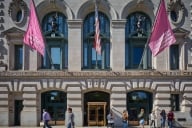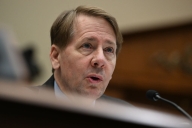You have /5 articles left.
Sign up for a free account or log in.
Never has it been more important for scientists to find ways to communicate their research. Some areas of science do not have a problem engaging the public. Take the world of astronomy -- viewers see the remarkable Hubble photographs and think the universe really looks that way. Children and adults are enraptured by movies of dinosaurs, imagining what it was like those millions of years ago.
But for the most part, so much of important research is ignored, mostly because it is difficult for the nonexpert to become engaged. The few required communication skills at the university level are focused on verbal communication -- how to write more clearly, how to become a talking head, how to present speeches and so forth. We are missing a key component: the visual.
For the past 25 years, I’ve been working with graduate and postgraduate candidates to improve their images and graphics for journal publications and presentation. I’ve recently seen a change -- more and more of these folks are banging on my door at the Massachusetts Institute of Technology for help. It’s exciting. They are seeing the value of thinking visually about and communicating their work. They now understand that when they create compelling and honest visuals of their research, a number of benefits come into play:
- Because I ask them to figure out what to “say” first -- to create a hierarchy of information within an image -- they tell me the exercise clarifies the science for themselves. It is, in fact, like writing an article.
- The final image or graphic is a means of bringing attention to their research. When, for example, their research appears on the cover of a journal, people are more likely to pick up on the story. Moreover, while making the images more compelling, the science becomes more accessible, nudging the nonexpert to become engaged and to want to ask questions.
- And finally, creating communicative visuals helps with funding. The people who make final decisions in foundations and government agencies welcome clear visual explanations of the science when reading the scores of proposals piling up on their desks.

 I am convinced that learning how to make technically accurate, interesting and honest images and graphics of science should be part of every scientist’s education. (At left, an example of a researcher’s image and, at right, my image of the identical material.) Even if the research is not necessarily photographable, exercises in coming up with the right metaphor or analogy are a powerful approach to speaking to the public.
I am convinced that learning how to make technically accurate, interesting and honest images and graphics of science should be part of every scientist’s education. (At left, an example of a researcher’s image and, at right, my image of the identical material.) Even if the research is not necessarily photographable, exercises in coming up with the right metaphor or analogy are a powerful approach to speaking to the public.
And yet the visual component is not part of a scientist’s formal education. Frankly, it is one of the reasons I wrote Picturing Science and Engineering for scientists. I describe the basics of using the camera that is surprisingly lacking in their understanding. I urge researchers to create “more than good enough” images so that their work might, in fact, get attention. The ease of using new cameras helps toward that end.
Perhaps the book will stir up some conversations about why the training of our scientists has a void in the visual realm. At the very least, if courses are not available, then other universities might consider creating a master class such as those we coordinate on our campus. We ask a limited number of graduate students to submit their draft figures and/or images in advance so that I can first take a look. And then, as a group, we gather to discuss each draft in depth. The most successful master classes are interdisciplinary. It’s interesting to hear a geologist describe to a chemist her color choices for a particular figure.
John Berger wrote in Ways of Seeing that “We only see what we look at. To look is an act of choice.” Given the destructive and dishonest messages the public is receiving about science these days, it is vital that the research community help the world choose to look.








